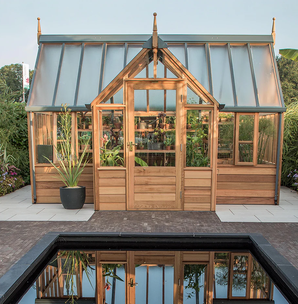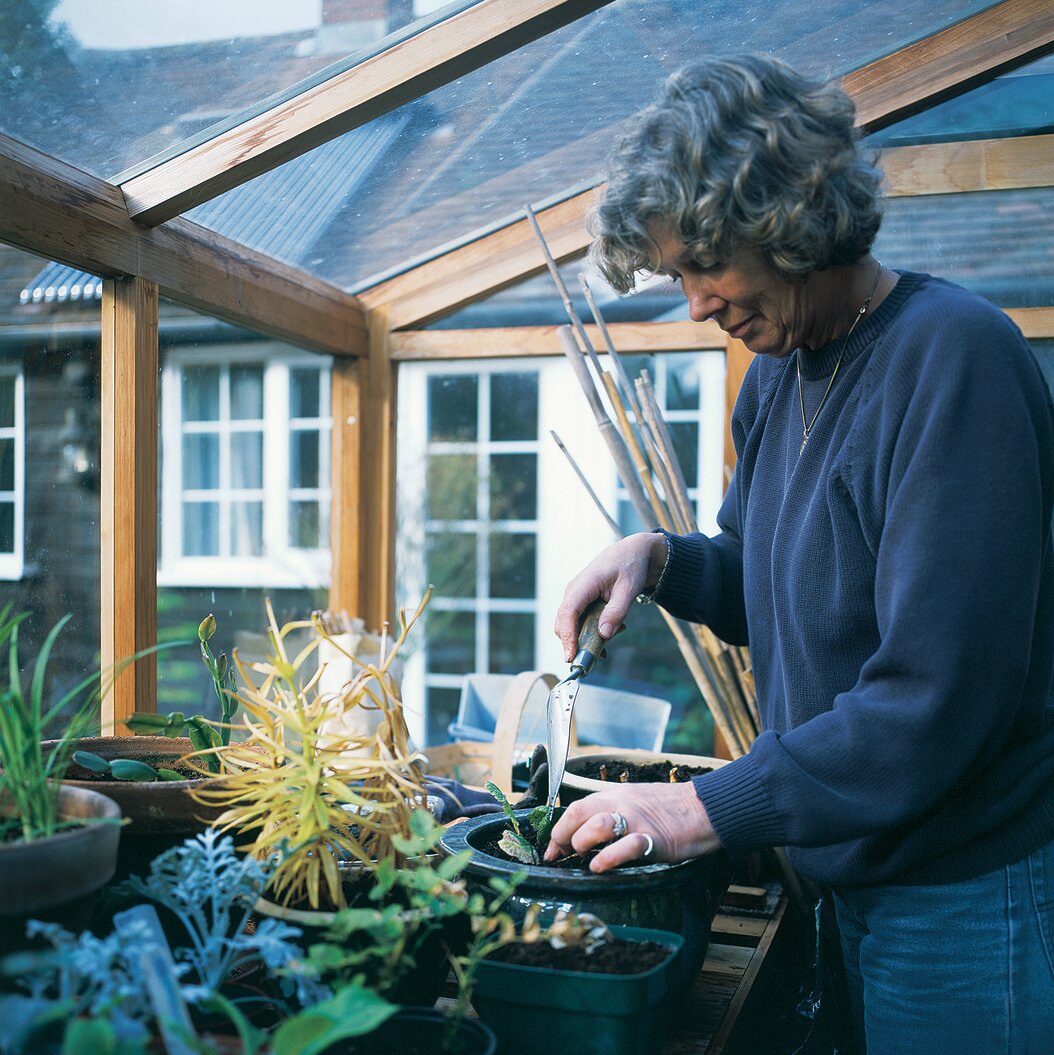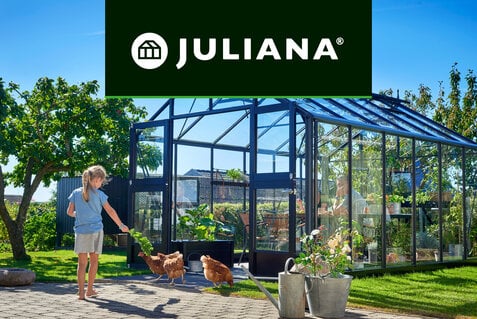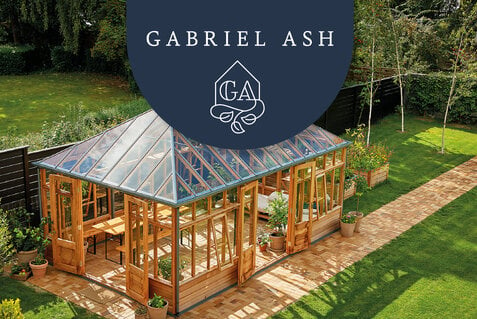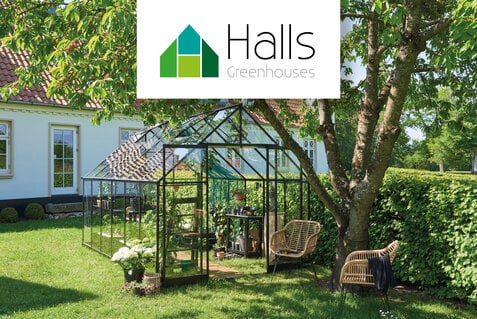Gabriel Ash
Purchase Guide
Here we will guide you with your Juliana greenhouse purchase - see tips regarding glazing, location and size.
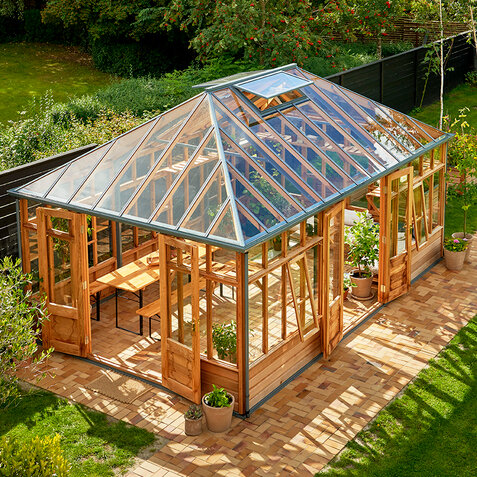
Before buying a greenhouse
A greenhouse typically stays in the garden for many years, so it is important to find out what is right in terms of needs and wishes .
Read more below
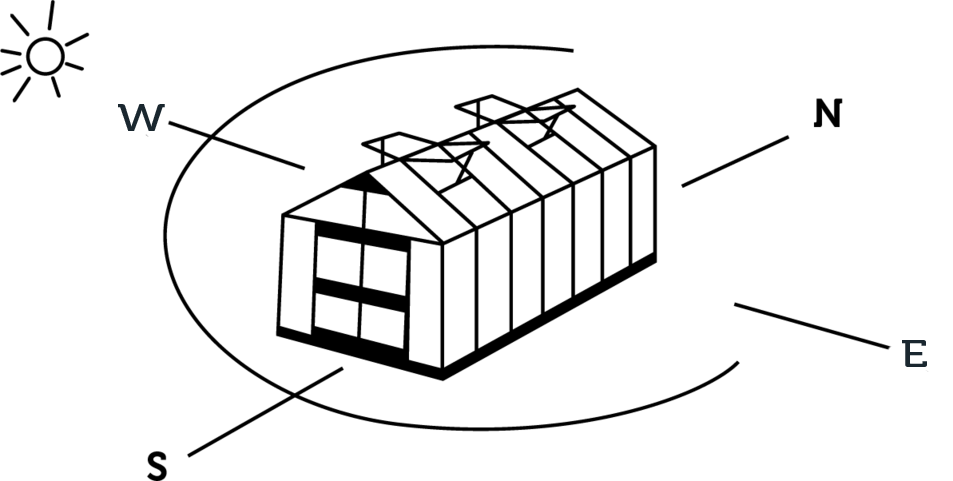
Where should I position the greenhouse?
Although there is no clear-cut answer, here, too, you need to consider what you intend to use the greenhouse for. If the greenhouse will solely be used to lengthen and optimise the growing season, you will benefit from some of the tips provided below. If you also want to be able to enjoy relaxing in your greenhouse, then it is a good idea to place it near your patio or the most frequently-used part of your garden. This way, the greenhouse will become a natural part of your everyday life, and you will enjoy it the most.
Whether to align it on a north–south or east–west axis depends on several factors. For instance, how early in the year you want to begin, whether you have glass or polycarbonate glazing, and the plants you want to grow. The guidelines below are only suggestions, as there are as many opinions on this topic as there are garden owners, but the guidelines are particularly good if you are a first-time buyer.
The north–south axis is ideal for greenhouses glazed with glass. When the sun rises in the east, your greenhouse will heat up quickly. When the sun is due south at noon, the narrowest side faces the sun, which prevents overheating. And when the sun sets in the west, the greenhouse soaks in the last warming rays of sunshine.
The east–west axis position is ideal if you want to get off to an early start in spring and if you have decided on a greenhouse glazed with polycarbonate. In early spring, most sunlight comes from the south-east to the south-west, and positioning the long side of the greenhouse southwards provides maximum sunlight for your plants. This is particularly important for a greenhouse glazed with polycarbonate, because its growing season can be longer than if it was on a north-south axis.
TIP: PROVIDE SHELTER.
As wind has a cooling effect on a greenhouse, reduce this effect by sheltering it with a hedge or fence. Also, make sure not to position the greenhouse near big trees. They will cast shadows on the greenhouse, and falling branches can damage glass and frames.
Drainage
Ensure the site has good natural drainage to prevent water accumulation around the Greenhouse. Avoid low-lying areas prone to flooding or areas where water might pool.
Accessibility
Consider easy access to the Greenhouse from your home or garden, especially if you’ll be spending a lot of time caring for your plants or tending to seedlings.
Proximity to Objects and Boundarie
We advise that the Greenhouse is not positioned too close to a boundary and that a minimum space of 2ft is maintained for installation purposes and to allow the timber to breathe.Local RegulationsIf you are not sure regarding planning or regulations, be sure to check with your local council for local building codes and regulations that might affect Greenhouse placement, size or setback requirements.
Proximity to Water and Electricit
Choose a location that is close to a water source for easy irrigation and a power supply for heaters, fans and other electrical equipment.Damage PreventionYou should avoid siting your Greenhouse under any object like trees etc... as falling debris can cause damage if large enough and smaller debris will cause excess algae to build up.
Microclimate
Consider any microclimates on your property that might influence temperature variations or frost pockets. Look for areas that are naturally warmer during colder months or cooler during hot summers.
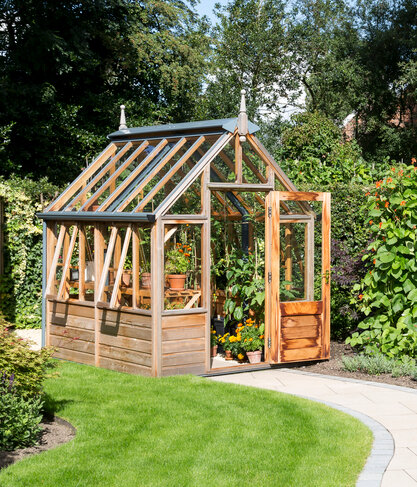
Always build on a solid base
It is important to place your greenhouse on a strong, stable base firmly anchored in the ground. Many insurance companies will only provide storm loss insurance if the greenhouse is attached to a base cast in concrete.
We advise you to talk with your insurance company about what type of base-and-greenhouse set-up your insurance covers to make sure you are properly insured in the event of storm loss/damage. You can choose to cast a base completely in concrete, which is very demanding. It is also possible to make a base out of pressure-treated wood.
We always recommend that you buy an original Gabriel Ashbase, comprising precisely pre-cut 12-cm-high galvanised steel frames. The base sections are easy to assemble on the anchor legs included with the base. Not only is this type of base sufficiently anchored, but it is also easy to make. A base-assembly guide is available under Help & Support.
Transform
Your Greenhouse Life
Are you looking for fresh inspiration to transform your greenhouse life into a lush paradise? Let's explore new ideas and tips together that will make your green haven even more magical!
The best choice
– quality greenhouses that suit your needs
Whether you unwind by putting seeds in pots or putting yourself in a chair with your feet up, a greenhouse creates the optimal setting.
Share your greenhouse joys
with many other greenhouse enthusiasts
Follow us here
Juliana Group
Juliana Group is a leading global supplier of quality residential greenhouses. Founded in 1963 by Mogens A. Stærmose in Odense, Denmark, the family-owned company is today run by third generation, Nikolaj Stærmose. Headquarter and production remains Odense-based with subsidiaries in the UK and Germany and export to more than 20 countries.
’We help people grow’. That is why our brands Halls, Juliana, and Gabriel Ash all set the frame for experiences that are as natural as they are magical. Despite our long history, we’re future-focused and curious on how we can improve the sustainability of our greenhouses. Learn more about Juliana and find inspiration for life in the greenhouse in our inspirational universe.

